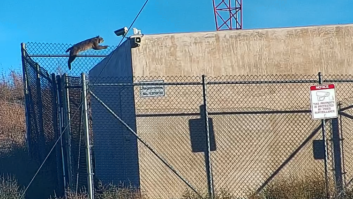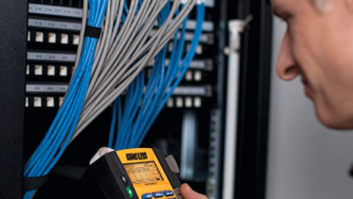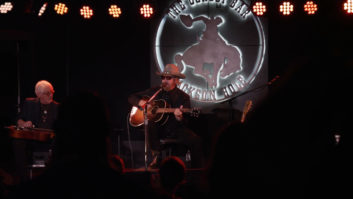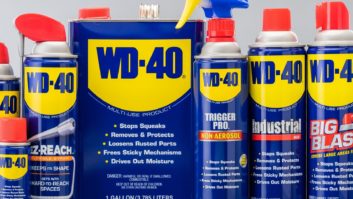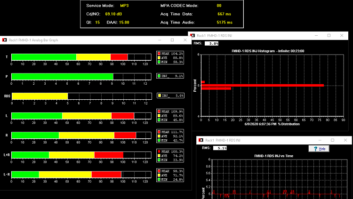Brent Barber, station manager and chief engineer for WDSO(FM) in Chesteron, Ind., read the June 19 Workbench in which we talked of RF interference issues. He could write a book about interference issues at WDSO.
Most of the complaints come from people aiming their antennas through the WDSO antenna to pick up Chicago stations. To make matters worse, two blocks away and in the path is a water tower that confuses the issue further.
Brent is used to the complaints and has a routine to handle the complaints. He responds by mailing a packet of information about interference, including the FCC Interference Handbook, preventive steps and a report that shows the station is operating legally.
Brent went a step further, and added the information to the station Web site. You can see it by visiting http://mail.duneland.k12.in.us/chs/wdso and click on Technical Information.
Having this information readily available shows that you are making an effort and assisting the complainant, as well as operating legally.
Make sure your receptionist has a form to record information from RFI complainants. Confirm that the receptionist understands: These complaints are not a joke and not to be ignored. The wrong attitude will earn the station an inspection.
. . .
You gotta love an engineer who builds his workshop out of Kindorf.
For the uninitiated: Kindorf is a brand of metal channel that engineers and electricians use to hang conduit, coax, coax switches and the like; it’s common at transmitter sites and used to support speakers in studios. The channel has holes and a recessed edge; spring-loaded nuts slip into the channel so you can add a bolt anywhere you want. It’s cheap and versatile, and there’s no tapping of bolt holes.
Electrotechnics does special application electronics, but Dave also sells a variety of hardware and connectors. In the hardware department, Dave has Allen wrench rack screws, which sure deter theft.
A former law enforcement officer, he’s also an avid collector of police sirens and emergency lights. Reach him at (206) 527-9000.
. . .
There’s still time to sign up for the technical workshops at this year’s NAB Radio Show in Seattle.
Once again, I’ll host the transmitter workshop, on Saturday, Sept. 14. We cover a number of topics in this all-day workshop, but one of the most popular is the transmitter manufacturers’ panel discussion.
Representatives of several leading transmitter companies discuss maintenance tips and modifications to keep their products performing at their best.
To get an idea of the kinds of things discussed, look at the performance improvement issue discussed at the Broadcast Electronics site www.bdcast.com/exciter. Click on the Summer 2002 issue and find the Service Bulletin on the index.
For owners of older FM-100C units, it’s possible for the modulated oscillator/AFC board to develop wideband noise. BE Manager of RF Customer Service Stuart Peters describes the fix for this problem in the bulletin described above. It involves installing two new capacitors and redressing some wires.
This is a good example of how transmitter manufacturers keep their products at their peak once they leave the factory.
If you can’t attend this year’s workshop, the NAB offers tapes of the sessions. Drop me an e-mail for more information or contact NAB’s Science and Technology Department.
. . .
Sometimes the fix to a problem can be simple.
Tom Osenkowsky, a Radio World contributor and engineering consultant in the Northeast, recently received a call from an engineer struggling with a processor that was doing all kinds of strange things.
The engineer noted hot regulator chips. Tom suggested looking at the power-supply positive and negative DC rails with a scope. You should see a straight line — pure DC — straight as a rail, hence the term.
Oscillation? Well, that would get regulator chips hot, so make sure there are bypass capacitors (usually 0.1 uf) from each rail to ground. Bad or missing bypass caps can cause all kinds of flaky problems.
Simple fix, problem solved.
. . .
While we’re on the subject of old tricks:
Michael Barnes, chief engineer of KVMV(FM) in McAllen, Texas, recalls a discussion in the May 22 edition about the struggles of rack-mounting equipment when working alone. Here’s a tip he thought was common knowledge. With so many new engineers entering the industry, it bears repeating. This technique is useful especially when trying to install heavy items.
Get a couple of 2-inch bolts the same thread as your rack rails (while most are 10-32, they are not all the same, especially if you find some military surplus stuff with No. 12 screws). Once you’ve checked that the threads are compatible, cut the heads off.
When installing the piece of equipment, hand-screw the headless bolts into the holes where the top rack screws would normally go. Then slide your heavy equipment in over the headless bolts. It should now be easier to hold the equipment with one hand while starting the bottom mounting screws with the other.
Of course, Michael writes that he cheats; once the screws are started by hand, he quickly cinches them down with a small power screw gun with the torque control set at the lowest possible setting.
Then remove the headless pilot bolts and insert normal rack screws and tighten them down as usual.
Michael always tries to put screws into every available hole when rack-mounting equipment. Screws are cheap; and the few minutes it takes to install them is better than possible damage to the equipment or the rack ears later.
I’ll add that investing in a battery-powered screwdriver is a real advantage. Thanks, David, for lending a hand to an often-frustrating problem.
By the way, if you are short on rack screws, mount the bottom screws first. The weight of the equipment will hold the top of the equipment against the rack rails. If you mount equipment using only the top rack screw holes, you run the risk of bending the rack ears, especially when mounting heavy equipment.
. . .
The PVC pipe is fitted with a rubber boot, held in place with a stainless-steel hose clamp. The boot is cut to fit around the lines; then the boot is sealed with a rubber butyl caulk.
Adding more cables? Remove the hose clamp, rip out the old caulk, add the new cable and recaulk. This is how the cellular guys do it; and with hundreds of thousands of sites, they have good reason to do it right the first time.
Submissions for this column are encouraged, and qualify for SBE recertification credit. Fax your submission to (703) 323-8044, or send e-mail to [email protected].





